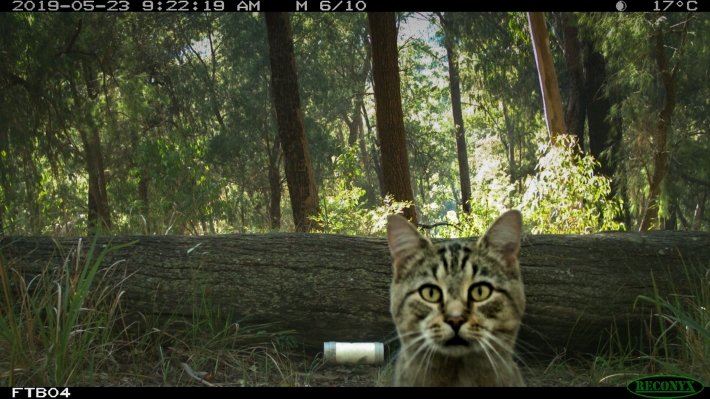What method do you use to cull feral cats? How effective is it?
NSW Department of Primary Industries (DPI) and the Department of Planning, Industry and Environment are part of the joint NSW Environmental Trust and University of New England (UNE) project to develop strategies for effective feral cat management and significantly reduce their negative impacts.
NSW DPI invasive species project leader, Guy Ballard, said the five-year study, which started in August 2019, is investigating the safety and efficacy of new feral cat baits and a range of other options, including humane trapping and novel cat control devices.
“The objective is to find the best combination of techniques which will lead to a reduction in feral cat impacts and assist the recovery of affected native species,” Dr Ballard said.
“We are assessing and refining existing feral cat control techniques and testing new control options.
“The aim is to also develop innovative online tools for feral cat and native species monitoring, train practitioners and develop a predictive decision tool to assist with planning for feral cat control.
“The research team is using camera trapping, telemetry and live-capture techniques to monitor responses in feral cats and native fauna to build on current local management efforts.”
New information and results will be shared with the public through field days, workshops, online and through various government, media and community channels.
The adaptive management experiment is being conducted at nine sites of 20,000 hectares each.
The NSW Environmental Trust has granted UNE $14.7 million to develop effective, integrated management strategies for feral cats in NSW with additional funds and in-kind support worth another $15.5 million.
How much of a problem are feral cats in this area currently?
The environmental fall-out of invasive animals is staggering. Feral cat predation on native birds alone, has been calculated at $144 million per year, based on the cost of cat control and estimates of environmental dollar-values for losses of individual animals killed by feral cats.
Feral cats are an environmental and biosecurity threat across and directly threaten 100 Australian species with extinction.
Feral cats have been estimated to kill more than one billion animals in Australia per year.
Cats transmit Toxoplasma gondii which can lead to illness and death in a variety of fauna, including livestock. Toxoplasma gondii can also infect people.
Beyond the environmental and economic impacts, invasive species also cause individuals and communities untold psychological and social distress.
What is the most effective method of protecting endangered species from introduced species like cats and foxes?
There are currently no cost-effective ways to manage feral cats at useful scales to address and ameliorate the above impacts, which is why this research is so important.


